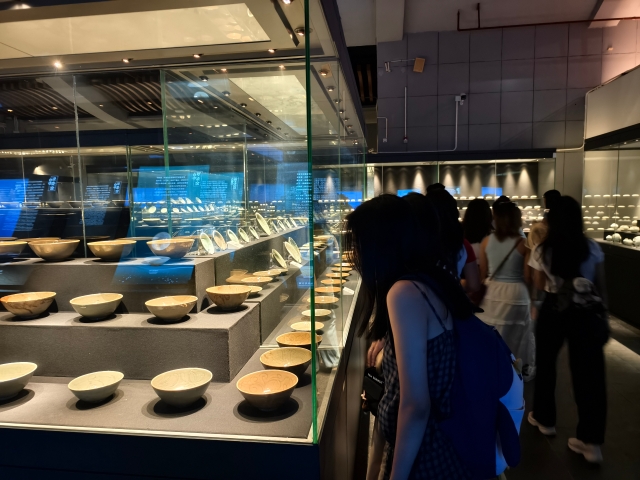Forty-one students from 20 countries, including China, Indonesia, Japan, Serbia, Italy, and Colombia, participated in a recent three-day study trip to Yangjiang, Guangdong, exploring the legacy of the Maritime Silk Road.
The trip, organized by Guangdong University of Foreign Studies, also included students from Jinan University and South China Normal University.

The program began with a lecture on how ports such as Guangzhou and Quanzhou once linked China with the world, exporting porcelain, silk, and tea to West Asia and East Africa while importing spices and gemstones, an early form of globalization that shaped cultures on both ends of the route.
A highlight of the trip was the visit to the Maritime Silk Road Museum of Guangdong, where the 800-year-old Nanhai No. 1 shipwreck is preserved. The Song Dynasty vessel, discovered off Yangjiang in 1987, carried tens of thousands of export goods and remains one of China's most significant underwater archaeological finds.

Peering through glass display cases, students admired relics recovered from the ship. "They look almost exactly like the bali earrings Indian women wear," said Jaiswal Ashmin from India in front of a pair of earrings. "I even saw a stone mill like the sihl lodha we still use in Indian kitchens to make spice pastes. It's amazing to see how our cultures have long been connected through everyday life and craft."

On the final day, students shared presentations on themes including history, culture, and technology, highlighting examples of China's exchanges with their own countries, from Indonesia's celebration of the Chinese New Year to Peru's Chifa cuisine, which originated from Chinese migration. Russian and Serbian students discussed panda diplomacy and the Balkans' role in the overland Silk Road.
"The Belt and Road Initiative today, like the ancient Silk Road, connects not just economies but also cultures and hearts," said Panna George Rambasikia from Papua New Guinea. "As a student in China, I hope to bring these stories home and help build understanding between our nations."
Reporter | Chen Siyuan
Photo | Guangdong University of Foreign Studies
Editor | Hu Nan, James Campion, Shen He
















